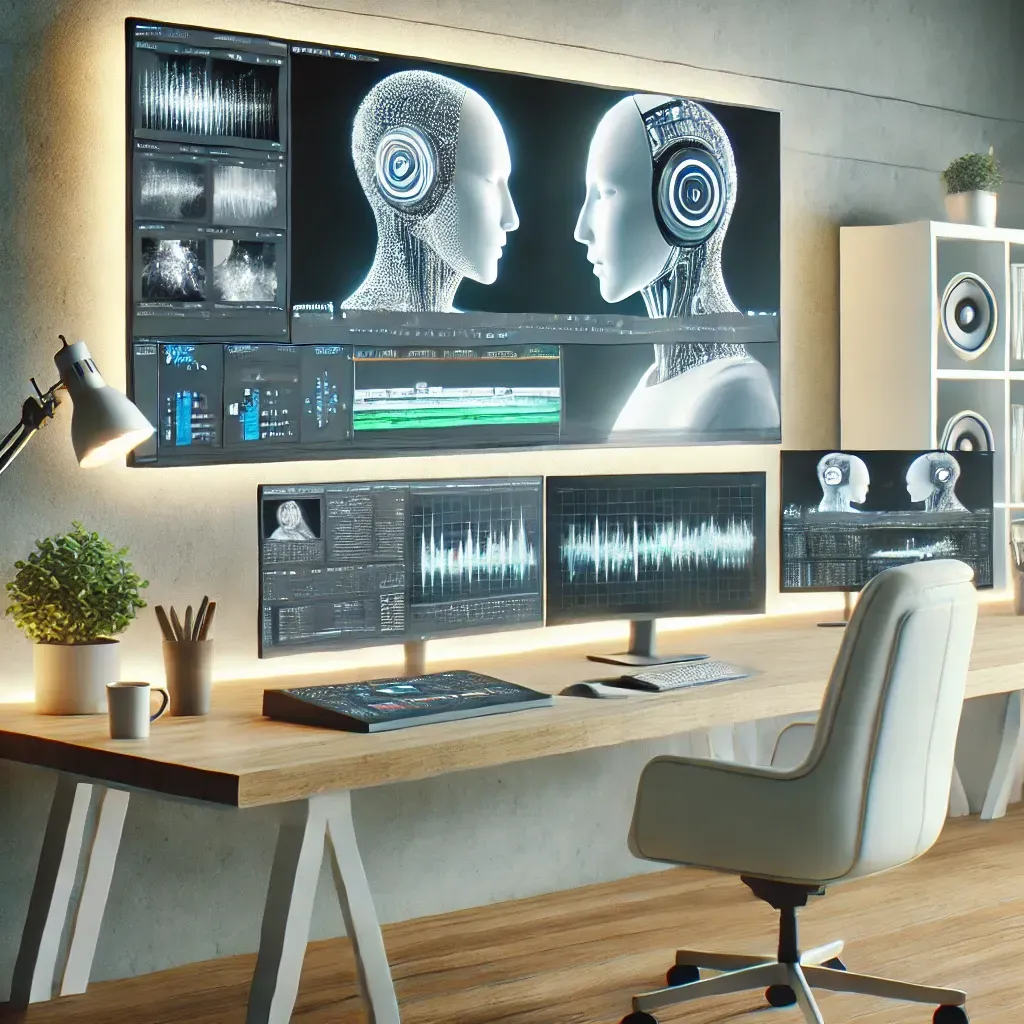Artificial Intelligence in Video Understanding and Streaming: A 2025 Perspective
Artificial Intelligence (AI) has become a driving force in transforming the video streaming industry, enhancing user experience, content delivery, and even video production. From real-time content analysis to personalized streaming recommendations, AI applications are reshaping how video content is consumed and understood. In this blog post, we will delve deep into the advancements in AI-driven video technologies, explore real-world use cases, and discuss the potential challenges in this rapidly evolving space.
AI in Video Understanding: Unlocking New Possibilities
AI in video understanding refers to the ability of machines to analyze, interpret, and derive meaning from visual content. Traditional video processing systems relied heavily on manual tagging and human intervention to categorize content, but AI-driven models can now automate much of this work, leading to faster, more accurate results.
Key Developments in Video Understanding
Scene and Object Detection
AI models such as convolutional neural networks (CNNs) and recurrent neural networks (RNNs) have enabled real-time scene and object detection in videos. These models can identify objects, people, locations, and actions in video frames, making them invaluable for applications such as autonomous vehicles, security surveillance, and content moderation.Video Summarization
AI-driven video summarization tools automatically create short clips or highlights from longer videos by identifying key moments. This is particularly useful in sports broadcasting, news media, and social media platforms, where users often prefer concise content over lengthy videos.Emotion and Sentiment Analysis
Advanced AI models can analyze facial expressions, tone of voice, and body language to determine the emotions of individuals in a video. This has significant implications for market research, customer feedback analysis, and entertainment applications.
Case Study: MovieNet
A notable example in AI video understanding is the development of MovieNet by researchers at Scripps Research. MovieNet processes videos by mimicking human brain functions, enabling it to provide nuanced understanding of moving images. The system can identify complex patterns, recognize emotions, and even predict plot outcomes based on contextual cues.
AI in Video Streaming: Enhancing User Experience
AI is also playing a pivotal role in improving the quality and efficiency of video streaming services. From adaptive bitrate streaming to personalized content recommendations, AI-driven innovations are ensuring that viewers get the best possible experience, regardless of their device or network conditions.
Adaptive Bitrate Streaming
Adaptive bitrate streaming uses AI to dynamically adjust the video quality based on the viewer’s internet speed and device capabilities. This ensures minimal buffering and optimal video playback, even in fluctuating network conditions.
- Machine Learning Models for Bitrate Optimization
AI models are trained on vast datasets of network conditions and viewer behavior to predict the best bitrate for a given scenario. Companies like Netflix and YouTube employ such models to maintain a seamless streaming experience for millions of users.
Content Recommendation Systems
AI-driven recommendation engines analyze user preferences, viewing history, and behavioral patterns to suggest personalized content. These systems are crucial for increasing user engagement and retention on streaming platforms.
- Collaborative Filtering and Deep Learning
Collaborative filtering algorithms, combined with deep learning techniques, can provide highly accurate recommendations. For example, Netflix’s recommendation system leverages neural networks to analyze multiple factors, including user interactions, ratings, and time of viewing.
Real-Time Language Translation and Subtitling
At CES 2025, VLC Media Player demonstrated an AI-driven real-time subtitling feature that generates subtitles for videos in various languages. This open-source AI model operates offline, making it accessible to a broader audience and reducing dependency on cloud-based services.
AI-Enhanced Video Production
In addition to streaming and understanding, AI is revolutionizing video production by automating various aspects of content creation.
Automated Video Editing
AI-powered tools can now edit videos automatically, saving significant time and effort for creators. These tools analyze video content, identify key moments, and generate polished final cuts. This is particularly useful for YouTubers, social media influencers, and marketing professionals who need to produce high-quality content quickly.
AI-Generated Content
Generative AI models like OpenAI’s DALL-E and Google’s DeepMind Veo2 are capable of creating realistic video content from textual descriptions. This technology has enormous potential in fields such as advertising, entertainment, and education.
- DeepFake Technology
While deepfake technology has raised ethical concerns, it also presents legitimate applications in movie production, gaming, and virtual reality. AI-generated characters and environments can significantly reduce production costs and time.
Challenges in AI-Driven Video Technologies
Despite the numerous advantages, integrating AI into video technologies comes with its own set of challenges.
Data Privacy and Security
AI-driven video systems often require access to large volumes of user data, raising concerns about privacy and data security. Ensuring compliance with regulations such as the General Data Protection Regulation (GDPR) is essential for companies operating in this space.
Bias and Fairness
AI models can sometimes exhibit biases based on the data they are trained on. In the context of video understanding, this could lead to inaccuracies in emotion detection, object recognition, or content recommendation. Continuous monitoring and updating of AI models are necessary to mitigate these issues.
High Computational Costs
Training and deploying AI models for video processing require significant computational resources, which can be expensive. Advances in hardware acceleration and cloud computing are helping to address this challenge, but cost remains a barrier for smaller organizations.
Future Trends in AI and Video
The future of AI in video technologies looks promising, with several trends likely to shape the industry in the coming years.
Enhanced Personalization
As AI models become more sophisticated, we can expect even greater levels of personalization in video streaming. This includes not only content recommendations but also personalized video formats, subtitles, and interactive experiences.
Virtual and Augmented Reality (VR/AR)
AI will play a crucial role in enabling immersive VR and AR experiences. From real-time environment mapping to interactive storytelling, AI-driven innovations will enhance the realism and engagement of VR/AR content.
Improved Accessibility
AI can help make video content more accessible to people with disabilities. For example, AI-driven sign language interpretation, audio descriptions, and real-time captioning can significantly improve the viewing experience for users with hearing or visual impairments.
Sustainable Streaming
With the growing demand for video content, energy consumption by streaming services is a concern. AI can help optimize streaming protocols and reduce energy usage, contributing to more sustainable digital media consumption.
Conclusion
AI’s integration into video understanding and streaming is transforming the digital media landscape, offering enhanced user experiences, operational efficiencies, and new creative possibilities. As technology continues to evolve, it will be crucial for stakeholders to address the associated challenges and ensure that AI-driven innovations are used responsibly.
From real-time language translation to adaptive streaming and automated video editing, the potential applications of AI in video technologies are vast. By embracing these advancements, the video industry can unlock new levels of engagement, personalization, and accessibility for audiences worldwide.
As we move forward, the collaboration between researchers, developers, and policymakers will be essential in shaping a future where AI-driven video technologies can thrive while ensuring ethical and sustainable practices. The next decade promises exciting developments in this space, and we are just beginning to explore the possibilities that AI can offer in video understanding and streaming.

